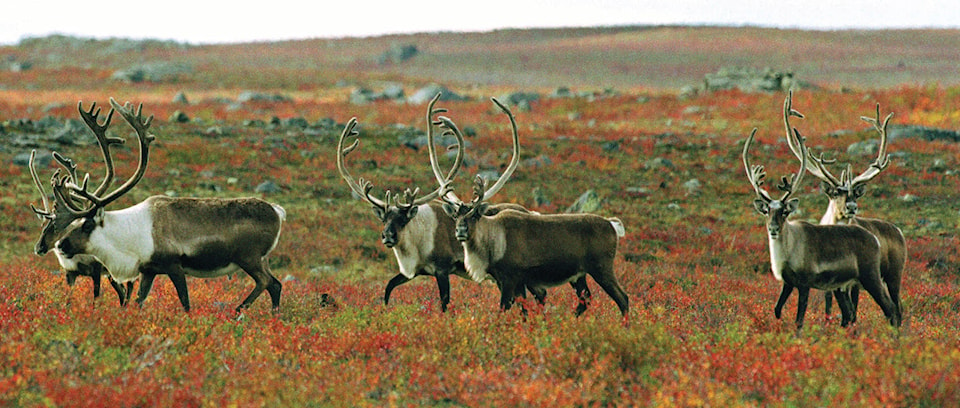Amos Scott is “feeling good” about his new job as the executive director of the Caribou Guardians Coalition (CGC).
“I’m feeling excited to be in a position that is advocating for the health and wellness of caribou,” he said soon after his hiring was announced.
The CGC exists to foster collaboration between existing caribou guardianship programs, and to help people create new guardianship programs across the range of the Bathurst herd. The organization was founded in 2020, and following a three-year planning phase, moved into its implementation phase last year.
Scott applied for his new position with CGC in March, and was hired soon after.
He was born and raised in Yellowknife and is Tlicho on his mother’s side. Even as a young boy, he appreciated the importance of the caribou to people across the North.
“I grew up with caribou,” he said. “Right from an early age, I knew it was important.
“My grandparents would make sure we always had caribou [to eat],” he added. “Caribou dry meat is probably one of my favourite foods in the world.”
He brings some interesting professional experience to the role, having worked as a journalist and filmmaker.
“Over the years I’ve had different ways to contemplate the role of caribou, and the importance of caribou in the North,” he said. “During that time, I’ve also learned about some of the issues around the management of caribou and the population decline struggles.
“I’m not the most experienced, but that’s one of the reasons I’m happy to have this job, because many of the people who work around protecting and conserving Bathurst caribou have been doing it for a long time, and I’m hoping to learn a lot from their expertise.”
The CGC’s membership includes a long list of Indigenous groups, including Deninu Kue First Nation, Lutsel K’e Dene First Nation, the NWT Métis Nation, the North Slave Métis Alliance, the Tlicho Government, and several hunter and trappers organizations in Nunavut’s Kitikmeot region.
Scott said one of his top priorities in his new role will be nurturing collaboration and communication between those groups and the GNWT.
“I think that one of the opportunities that has already started to be established is that relationship between the Indigenous members of the Caribou Guardians Coalition, and the relationship that they have in the co-management of caribou with the Government of the Northwest Territories,” he said. “That’s never an easy relationship to have, but I think [CGC has] started off in a good direction and I’m hoping that I’m able to support that work.”
The Bathurst herd, part of the barren-ground caribou species, occupy a range that extends from the southern and central NWT to the Bathurst Inlet in Nunavut. In some years, the animals winter as far south as northern Saskatchewan.
Scott could not comment on the current overall health of the herd, but pledged to do as much as he can support caribou conservation in his new role.
“I would hope that the numbers are improving and I would hope that the health of the herd is improving,” he said. “There’s been some aggressive management measures in the last number of years with the no-hunting zone, and hopefully that’s doing the job it needs to do.
“I’m there to support the people who are doing the hard work and the good work around helping caribou. I think that just needs to continue and they need more of a support system, and I hope to be that person.”
CGC receives funding from several sources, including Polar Knowledge Canada, Environment and Climate Change Canada, the GNWT’s Department of Environment and Climate Change, and Aboriginal Fund for Species at Risk.
